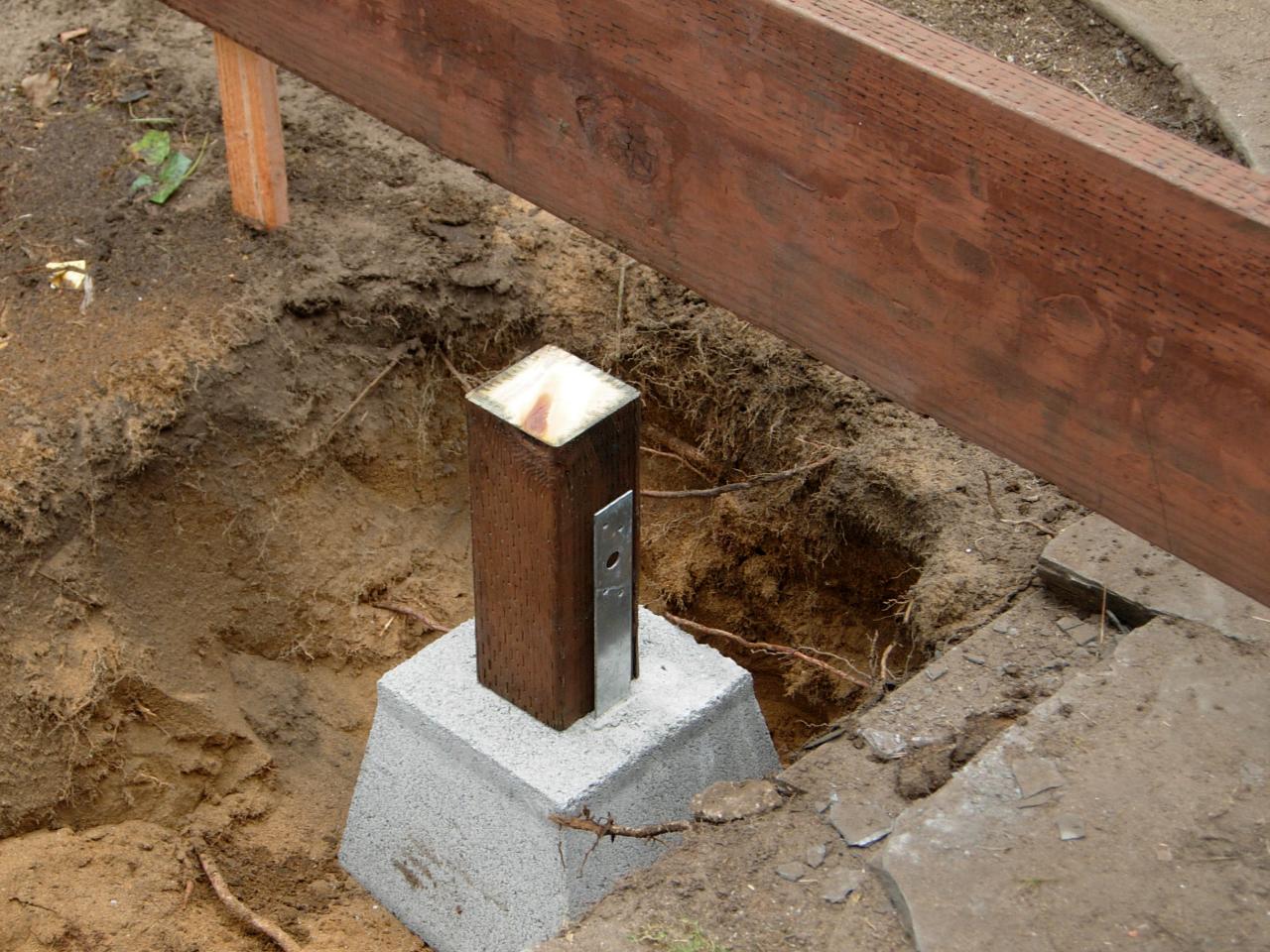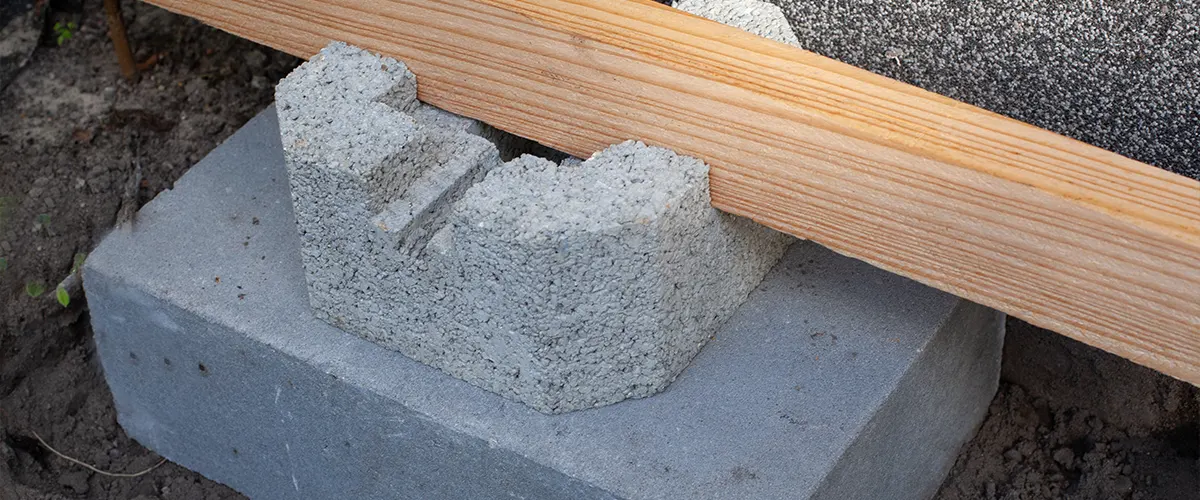Structure from scratch: The Ultimate Overview to Designing and Installing Deck Footings
Wiki Article
Ensure Security and Durability With Effectively Installed Deck Grounds
Deck footings might not be the most extravagant aspect of deck building, but they play an essential duty in ensuring stability and durability. In this discussion, we will certainly check out the importance of correct deck footings, aspects to take into consideration throughout installment, various types of footings readily available, step-by-step installment overview, and maintenance suggestions for making sure durable footings.
Relevance of Correct Deck Grounds
Why are appropriately installed deck footings vital for the security and longevity of your deck? Deck grounds are the structure on which the deck rests, moving the tons from the deck to the ground.To start with, effectively installed deck footings distribute the weight of the deck uniformly, protecting against any uneven settling or sinking. This is particularly important in locations with unsteady dirt, as it aids to mitigate the threat of the deck collapsing or shifting. Furthermore, well-installed footings make sure that the deck continues to be degree, stopping any type of structural damages that can occur when a deck comes to be irregular.
Second of all, properly installed grounds supply a solid support for the deck, stopping extreme movement and guide. This assists to maintain the architectural stability of the deck, decreasing the risk of injuries or mishaps. It also decreases the deterioration on the deck, allowing it to hold up against the aspects and regular usage for a longer amount of time.
Variables to Think About for Deck Ground Setup
When mounting deck footings, there are a number of crucial aspects to take into consideration for proper installation. Various dirt types have different load-bearing capabilities, so it is crucial to carry out a soil examination to make sure the grounds can support the weight of the deck and its residents. By taking right into account these variables, you can guarantee the appropriate setup of deck footings and appreciate a lasting and stable deck.Kinds Of Deck Footings to Choose From
There are numerous different sorts of deck grounds offered for you to select from. Each kind has its own advantages and negative aspects, so it's necessary to consider your certain needs and the problems of your deck before making a choice.One usual sort of deck ground is the concrete footing. This involves digging openings in the ground and putting concrete right into them to produce a solid foundation. Concrete footings are sturdy and give superb security, making them appropriate for decks in areas with challenging dirt problems or high wind tons.
One more option is the helical pier ground, which includes a steel shaft with helical plates that are screwed right into the ground. These footings are quick to mount and can be utilized in various soil kinds, including sandy or clay soils. They are additionally flexible, permitting easy progressing of the deck.
Sonotube grounds are another preferred option. These footings are created by positioning a cardboard tube in a hole and filling it with concrete. Sonotube grounds are relatively simple to set up and supply adequate security for smaller decks or in areas with much less requiring soil problems.

When choosing the type of deck footing, it's important to think about aspects such as dirt problems, deck dimension and weight, regional building ordinance, and individual preferences. By choosing the proper footing type, you can make sure the security and durability of your deck.
Step-by-Step Guide for Setting Up Deck Footings

Determine the place: Begin by marking the specific position of each ground using stakes and string (Deck Footings). Consider any neighborhood building ordinance or guidelines regarding obstacle ranges
Dig the holes: Make use of a blog post hole digger or an auger to dig the openings for the grounds. Usually, a depth of at least 36 inches is suggested for security.
Degree the openings: Ensure that all-time lows of the holes are level (Deck Footings). This can be accomplished by making use of a level or a straight board across the top of the holes
Add crushed rock: Location a layer of crushed rock at the end of each opening to boost drainage and prevent the footing from sinking into the soil in time.
Place the ground types: Place the ground creates right into the openings, guaranteeing they are focused and degree. Usage risks to safeguard them in area.
Mix and put concrete: Adhere to the guidelines on the concrete mix bag to prepare the concrete. Put the concrete into the ground kinds, loading them entirely.
image source Smooth the surface area: Make use of a trowel to smooth the surface area of the concrete and eliminate any kind of air pockets. Enable the concrete to treat according to the maker's directions.
Upkeep Tips for Lasting Deck Footings
Appropriate upkeep is vital for guaranteeing the long life and stability of deck grounds. By frequently inspecting and keeping your deck footings, you can stop damage and prospective safety dangers.Regular cleansing is additionally vital for maintaining deck footings. Debris, plant life, and dust can gather around the footings, which can lead to moisture accumulation and decay. Cleaning up the footings frequently, making use of a pressure or a brush washer, can help protect against these problems and expand the life-span of your deck.
In enhancement to cleaning, it is essential to maintain the location around click over here now the footings clear of any type of blockages. Stay clear of piling items against the footings or enabling plants to expand also near them. These obstructions can trap moisture and trigger the footings to degrade with time.
Lastly, regular resealing of the footings is recommended to safeguard them from wetness and various other ecological aspects. Using a water-proof sealer can aid prevent water damages and extend the lifespan of the footings.
Conclusion
Finally, proper installation of deck footings is essential for making sure security and durability of your deck. Elements such as soil type, load capacity, and local structure codes need to be taken into consideration when choosing the appropriate kind of deck grounds. Complying with a step-by-step guide for installation and normal upkeep will help to ensure the grounds continue to be lasting and resilient.In this discussion, we will certainly discover the value of proper deck grounds, variables to think about during installation, various types of footings readily available, step-by-step installation overview, and maintenance tips for making certain durable footings. Deck grounds are the structure on which the deck rests, moving the tons from the deck to the ground.One common kind of deck footing is the concrete ground. Place the footing types: Insert the ground develops right into the openings, ensuring they are focused and level.In verdict, appropriate installment of deck grounds is essential for making certain stability and long life of your deck.
Report this wiki page